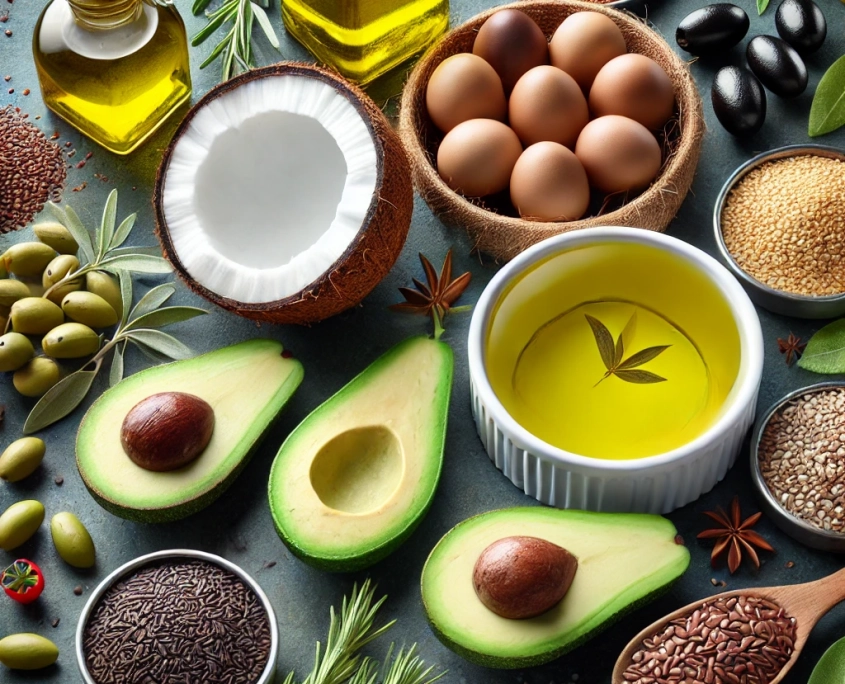Rethinking Nut & Seed Butters: Healthier, Low-PUFA Alternatives
Stable, Nutrient-Dense Spreads for Optimal Health
Why Fat Quality Matters
Fats are an essential part of a healthy diet, but not all fats are created equal. Many nut and seed butters are high in polyunsaturated fatty acids (PUFAs), particularly linoleic acid. While some PUFA intake is necessary, excessive consumption—especially from oxidized or rancid sources—can lead to inflammation, oxidative stress, and metabolic dysfunction.
The Problem with High-PUFA Spreads
- Prone to Oxidation and Rancidity – PUFAs are highly unstable and prone to oxidation, especially when exposed to heat, light, and air. This oxidation produces harmful free radicals that contribute to inflammation and chronic disease.
- High Linoleic Acid Content – Linoleic acid, the primary omega-6 fatty acid in many seed butters, promotes an imbalanced omega-6 to omega-3 ratio. Excessive omega-6 intake has been linked to chronic inflammation, metabolic disorders, and cardiovascular disease.
- Processing and Added Oils – Many commercial seed butters contain added vegetable oils (e.g., sunflower or canola oil), which further increase the PUFA content and likelihood of rancidity. Even “natural” or organic options may still contain oxidized fats due to poor storage or excessive processing.
Is There a Safer Alternative?
If you enjoy nut and seed butters but want to avoid the health risks of high-PUFA options, here are a few recommendations:
- Look for cold-processed, fresh, and properly stored varieties to minimize oxidation.
- Consume in moderation and balance with omega-3-rich foods (e.g., wild-caught fish, flax, or chia seeds).
- Choose alternatives with lower PUFA content and higher stability, such as macadamia nut butter, coconut butter, or raw almond butter.
The Best Low-PUFA Nut & Seed Butters
1. Macadamia Nut Butter
- Fat Profile: ~80% monounsaturated, ~2% PUFA
- Why It’s a Great Choice: Highly stable and anti-inflammatory, macadamia nuts are rich in palmitoleic acid, which supports metabolism.
- Best Option: Look for raw, stone-ground macadamia butter without added oils.
2. Coconut Butter (a.k.a. Coconut Manna)
- Fat Profile: ~90% saturated, ~2% PUFA
- Why It’s a Great Choice: Coconut butter is primarily composed of medium-chain triglycerides (MCTs), which support energy production, brain function, and gut health.
- Best Option: Organic, unrefined coconut butter with no additives.
3. Raw Almond Butter (Preferably from European or Marcona Almonds)
- Fat Profile: ~65% monounsaturated, ~12% PUFA
- Why It’s a Great Choice: Almonds are a good source of vitamin E and magnesium, supporting cardiovascular and brain health.
- Best Option: Choose raw, stone-ground almond butter made from sprouted almonds to reduce anti-nutrients.
4. Pili Nut Butter
- Fat Profile: ~85% monounsaturated, ~5% PUFA
- Why It’s a Great Choice: Pili nuts are low in PUFAs and high in healthy fats and magnesium, supporting muscle function and relaxation.
- Best Option: Look for raw, sprouted pili nut butter with no added oils.
5. Cacao Butter (for a Chocolatey Alternative)
- Fat Profile: ~60% saturated, ~35% monounsaturated, ~3% PUFA
- Why It’s a Great Choice: Highly stable with natural antioxidants, cacao butter provides a rich, chocolatey flavor.
- Best Option: Raw, organic cacao butter without additives.
6. Ghee Butter Spread (Dairy-Based Alternative)
- Fat Profile: ~65% saturated, very low in PUFA
- Why It’s a Great Choice: Rich in butyrate, vitamin A, and vitamin K2, ghee supports gut and immune health and is extremely stable.
- Best Option: Grass-fed ghee, blended with spices like cinnamon or vanilla for a flavorful spread.
DIY Low-PUFA Butter Blend
For a nutrient-dense, stable spread, try making your own blend:
- 50% macadamia butter (creamy and high in monounsaturated fats)
- 25% coconut butter (stable and rich in MCTs)
- 25% cacao butter (adds smoothness and antioxidants)
- Optional: Add raw honey, cinnamon, or vanilla extract for flavor
Final Thoughts
Replacing high-PUFA seed butters with stable, low-PUFA alternatives can reduce inflammation, improve metabolic health, and support long-term wellness. Options like macadamia, coconut, and pili nut butters are not only delicious but also provide essential nutrients without the risks of rancid oils.
When to Be Cautious with Nuts and Seeds
While healthier nut and seed butters can be beneficial, they may not be suitable for everyone:
- Gut Sensitivities: People with IBS, leaky gut, or autoimmune conditions may need to avoid or limit certain nuts and seeds.
- Overconsumption of PUFAs: Even healthier nuts like almonds or walnuts can contribute to omega-6 overload if eaten in large quantities.
- Oxalates and Kidney Stones: Almonds and sesame seeds are high in oxalates, which can contribute to kidney stone formation in susceptible individuals.











